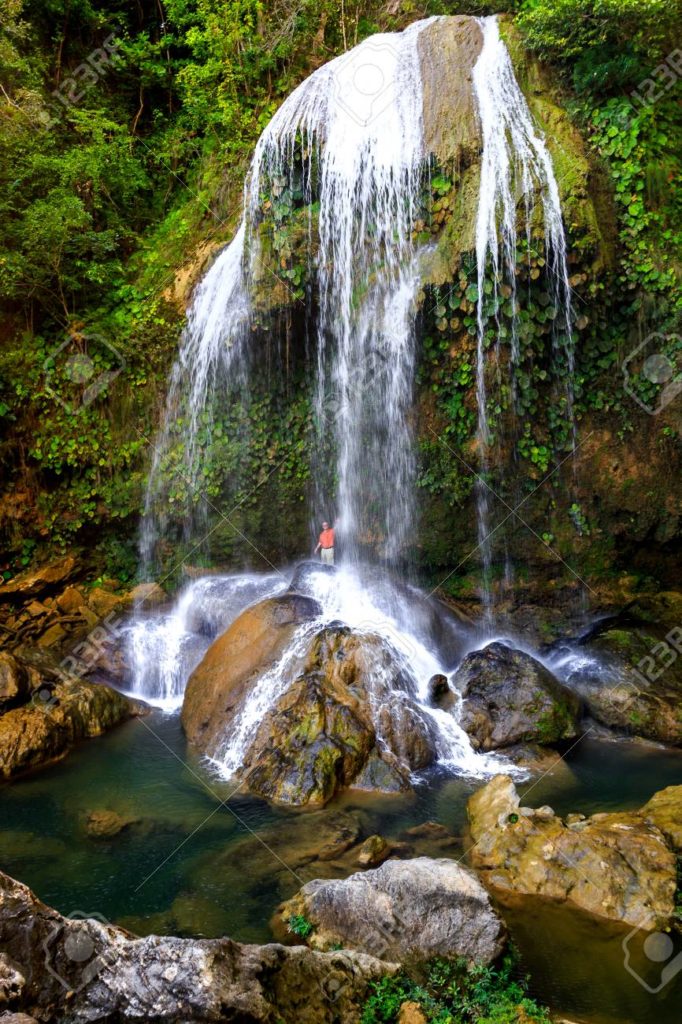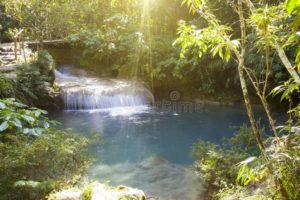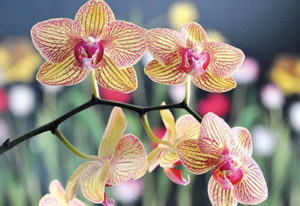 SOROA “ARCOIRIS DE CUBA”, OBRA MAESTRA DE LA NATURALEZA CUBANA. FOTOS.
SOROA “ARCOIRIS DE CUBA”, OBRA MAESTRA DE LA NATURALEZA CUBANA. FOTOS.
Soroa se encuentra en los límites de las elevaciones montañosas de la Sierra del Rosario, a unos 70 kilómetros al oeste de Pinar del Río, perteneciente a la Cordillera de Guaniguanico, del municipio Candelaria en la provincia de Artemisa, en el pequeño valle que forma el Río Manantiales, principal afluente del Bayate.
EL SALTO DE LOS MANANTIALES DE SOROA.
EL llamado Salto de Soroa alcanza 22 metros de altura, provocado por el Río Manantiales es una de las maravillas de la geografía cubana. Famoso desde el siglo XVII por su hermosura, es conocido también como el “Arcoiris de Cuba”. Es uno de los lugares más concurridos porque desde lo alto se contempla una vista portentosa.
Soroa es un paraje natural de gran hermosura y variedad, considerado Reserva de la Biosfera en el occidente de Cuba. Visitantes de todo el mundo acuden a este maravilloso lugar para admirar y disfrutar la bella obra que la naturaleza creó en este abrupto lugar, rodeado de montañas y ríos.
Soroa obtiene su nombre de dos hermanos españoles, Lorenzo y Antonio Soroa Muñagorri, que a aquellos lugares llegaron por el año 1856 con la ilusión de hacer fortuna, adquieren en ese lugar el cafetal La Merced, más tarde compran los cafetales Neptuno, San Luis y San Ramón de Aguas Claras, hecho que motivó que al paso de los años la zona se nombrara con el apellido de los propietarios, pero no se hizo famosa gracias a los hermanos Soroa, sino a la abrupta naturaleza que hizo que otras personas se acercaran allí.
La historia local también se engrandece con algunos aspectos de interés, pues esta zona fue escenario de una importante batalla de la Guerra de Independencia, y en sus alrededores se hallan las ruinas de antiguos cafetales.
Allí existe una construccion verdadera obra maestra tambien del hombre y es el llamado “Castillo de las Nubes” se construyó en la década de 1940 gracias a un capricho de Pedro Rodríguez, su propietario original, y asemeja una mansión medieval, situada en lo alto del cerro El Fuerte.
Al abandonar sus propietarios el país tras el triunfo de la Revolución, el Castillo de las Nubes pasó a ser patrimonio del Estado cubano.
Desde ahí, se puede visitar el famoso paraíso de las orquídeas de Soroa y el popular salto de agua Los Manantiales. El castillo pertenece al municipio Candelaria de la provincia de Artemisa, Cuba.
En un área de 35 mil metros cuadrados se atesoran unas 20 mil especies de orquídeas, plantas legendarias diseminadas por casi todo el planeta, pero que tienen en las regiones tropicales y subtropicales las variedades más exuberantes.
Las 130 especies autóctonas de la Isla, de acuerdo con los botánicos cubanos, están bien representadas en ese recinto que además de dedicarse a la exhibición realiza trabajos de investigación, expansión del cultivo y de formación de expertos en la materia. Además, unas 700 especies de otras regiones del planeta pueden admirarse en un medio natural o en los umbráculos acondicionados para ello.
En 1952 el abogado canario, Tomás Felipe Camacho, comienza a construir un jardín, cerca de su Rancho Pinilla, en honor a su hija y esposa.
Este peculiar jardín se componía solo de orquídeas, importando para ellas exóticas variedades de Asia, América Central y del Sur, y muchas autóctonas. Con los años fue creciendo el jardín y especializándose en orquídeas, hoy alberga en sus 35 000 metros cuadrados, más de 20 000 ejemplares de 700 especies de esta codiciada flor, siendo el mayor orquideario del país y uno de los más importantes a nivel mundial.
El Jardín Botánico Orquideario de Soroa es actualmente un centro científico productivo perteneciente a la Universidad de Pinar del Río y está dedicado a la conservación de las orquídeas cubanas. Entre los ejemplares más llamativos por su tratamiento de frutas para la belleza y novedad figura la Encyclia boucortin, descubierta en la propia Sierra del Rosario a fines del siglo XX.
El amor o la sensibilidad por las orquídeas aúna tanto a especialistas como a enamorados y personas de todas las edades sensibles a la belleza y a la naturaleza. Tal parece que un poco de todo eso era, a su manera, el fundador de este valioso sitio, el abogado de origen canario Don Tomás Felipe Camacho, quien lo creo en su propiedad en el año 1943. Con el tiempo el señor Camacho llegó a ser miembro de la Sociedad Cubana de Orquídeas, afiliado a la American Orchid Society y a la Eastern Orchid Congreso.
Se cuenta que su colección alcanzó los 18 mil ejemplares de todas las especies conocidas en su tiempo. El inició la importación de especies exóticas procedentes fundamentalmente de Asia y América. El actual Jardín Botánico no desmerece sino más bien amplía y expande, como seguramente él lo hubiera deseado, el legado de su fundador. De modo que en su Orquideario nacional tienen los lugareños motivos para enorgullecerse y más, disfrutar del fruto de una obra muy interesante, enriquecedora de su espiritualidad.
 SOROA “RAINBOW OF CUBA”, MASTERPIECE OF THE CUBAN NATURE.
SOROA “RAINBOW OF CUBA”, MASTERPIECE OF THE CUBAN NATURE.
Soroa is located in the limits of the mountainous elevations of the Sierra del Rosario, about 70 kilometers west of Pinar del Río, belonging to the Cordillera de Guaniguanico, of the Candelaria municipality in the province of Artemisa, in the small valley that forms the Manantiales River, the main tributary of the Bayate.
THE SALTO OF THE MANANTIALES OF SOROA.
The so-called Salto de Soroa reaches 22 meters high, caused by the Manantiales River is one of the wonders of the Cuban geography. Famous since the 17th century for its beauty, it is also known as the “Rainbow of Cuba”. It is one of the busiest places because from the top you can see a marvelous view.
Soroa is a natural place of great beauty and variety, considered a Biosphere Reserve in western Cuba. Visitors from all over the world come to this wonderful place to admire and enjoy the beautiful work that nature created in this abrupt place, surrounded by mountains and rivers.
THE SOROA BROTHERS.
Soroa gets its name from two Spanish brothers, Lorenzo and Antonio Soroa Muñagorri, who came to those places in 1856 with the illusion of making a fortune, they acquired the La Merced coffee plantation there, later they bought the Neptuno, San Luis and San Ramón de Aguas Claras, a fact that motivated the area to be named with the owners’ surname over the years, but it did not become famous thanks to the Soroa brothers, but to the abrupt nature that made other people come there .
Local history is also enhanced by some aspects of interest, as this area was the scene of an important battle of the War of Independence, and in its surroundings are the ruins of old coffee plantations.
THE “CASTLE ON THE CLOUDS”.
There, there is a true masterpiece of mankind and it is the so-called “Castle of the Clouds”. It was built in the 1940s thanks to the whim of Pedro Rodríguez, its original owner, and resembles a medieval mansion, located on top of the Cerro El Fuerte.
When its owners left the country after the triumph of the Revolution, the Castillo de las Nubes became the heritage of the Cuban State.
From there, you can visit the famous orchid paradise of Soroa and the popular Los Manantiales waterfall. The castle belongs to the Candelaria municipality of the province of Artemisa, Cuba.
THE SOROA ORCHIDARIUM.
In an area of 35 thousand square meters, some 20 thousand species of orchids are treasured, legendary plants scattered almost all over the planet, but which have the most exuberant varieties in tropical and subtropical regions.
The 130 autochthonous species of the Island, according to Cuban botanists, are well represented in that enclosure which, in addition to dedicating itself to the exhibition, carries out research, expansion of cultivation, and training of experts in the field. In addition, some 700 species from other regions of the planet can be admired in a natural environment or in the umbrellas prepared for it.
In 1952, the Canarian lawyer, Tomás Felipe Camacho, begins to build a garden, near his Rancho Pinilla, in honor of his daughter and wife.
This peculiar garden consisted only of orchids, importing for them exotic varieties from Asia, Central and South America, and many indigenous ones. Over the years the garden grew and specializing in orchids, today it houses over 35,000 square meters, more than 20,000 specimens of 700 species of this coveted flower, being the largest orchid garden in the country and one of the most important worldwide.
The Soroa Orchid Botanical Garden is currently a productive scientific center belonging to the University of Pinar del Río and is dedicated to the conservation of Cuban orchids. Among the most striking specimens for its fruit treatment for beauty and novelty is the Encyclia boucortin, discovered in the Sierra del Rosario itself at the end of the 20th century.
THE LOVE FOR THE ORCHIDS.
The love or sensitivity for orchids brings together specialists as well as lovers and people of all ages sensitive to beauty and nature. It seems that a little of all that was, in his own way, the founder of this valuable site, the lawyer of Canarian origin Don Tomás Felipe Camacho, who created it on his property in 1943. In time, Mr. Camacho came to be a member of the Cuban Orchid Society, affiliated with the American Orchid Society and the Eastern Orchid Congress.
It is said that his collection reached 18 thousand copies of all the species known in his time. He started importing exotic species mainly from Asia and America. The current Botanical Garden does not detract but rather expands and expands, as he would surely have wished, the legacy of its founder. So in their national Orchid Garden, the locals have reasons to be proud and more, to enjoy the fruit of very interesting work, enriching their spirituality.
Agencies/ Wiki/ Ecured/ Various/ Internet Photos/ Arnoldo Varona/ www.TheCubanHistory.com
THE CUBAN HISTORY, HOLLYWOOD.













